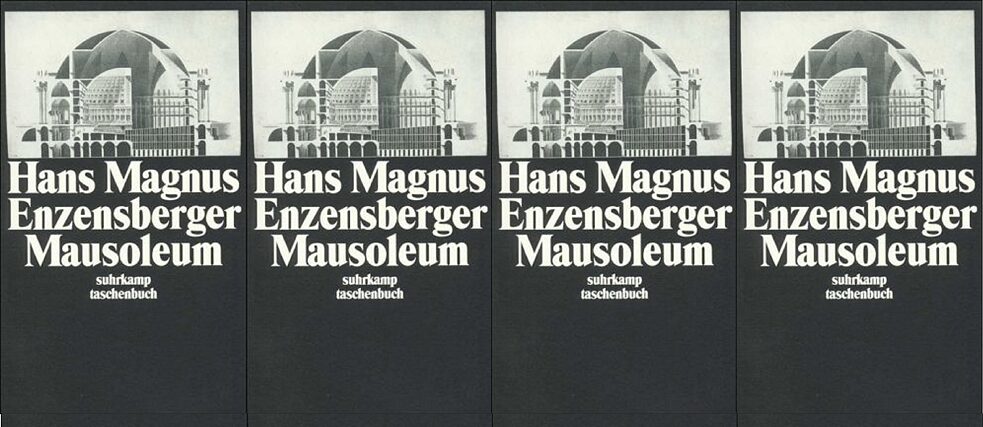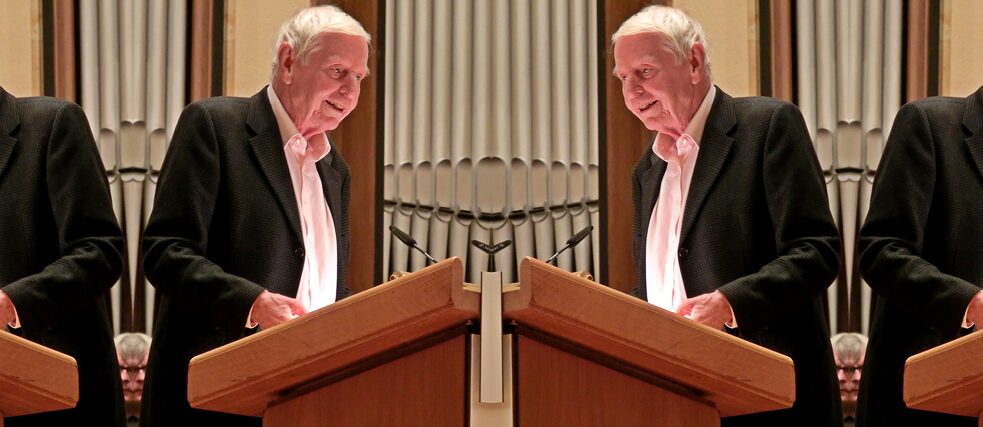Poetry
POETRY IS OMNIVOROUS

Hans Magnus Enzensberger (1929 – 2022) is regarded as one of the most important German-language poets of the 20th century. A portrait of him, as penned by his translator.
By Pavel Novotný
“Poetry is, in my view at least, something like an omnivore – it devours everything. That is to say, there is absolutely nothing – that concerns us, that we experience, all of our experiences – there is absolutely nothing that cannot find a place in poetry.” These were once the words of Hans Magnus Enzensberger at the Writers' Festival in Prague. In accordance with this aesthetic approach, he unites the seemingly incompatible. His literary roots go back to Bertolt Brecht and Gottfried Benn. While he uses the technique of literary montage masterfully, his poetry has often been described as "anti-poetry".
An organic combination of poetry and science, philosophy or even politics is what characterises Enzensberger's poetry. Enzensberger is not only an important poet but also an astute essayist, prose writer, author of children's books and radio plays and dramatist who likes to provoke and put on various literary masks. In keeping with this trait, some of his works have also appeared under various pseudonyms like Andreas Thalmayr, Elisabeth Ambras, Linda Quilt and Giorgio Pellizzi. Enzensberger is also a renowned translator, editor and publisher.
FROM THE “ANGRY YOUNG MAN” AND THE REVOLUTIONARY TO THE SCEPTIC
Especially in the 1950s and early 1960s, Enzensberger was considered to be the “angry young man” of German language poetry – one who cynically criticised the Wirtschaftswunder (post WWII German Economic Miracle), the new consumerist world and the unresolved past, notable above all in his first two poetry collections “Verteidigung der Wölfe” (Defense of the Wolves) and “Landessprache” (National Language). In the second half of the 1960s he gave up poetry for a while and engaged with political issues as objectively as possible. Thus, in his legendary left-leaning magazine “Kursbuch” (Course Book) he consciously and programmatically ‘buried’ literature and went on to cultivate pure documentarism, ref. his novel “Der kurze Sommer der Anarchie” (Anarchy’s Short Summer). In 1968-69 Enzensberger was in Cuba and it had a significant influence on his literary work. The stint turned out to be a real shock therapy for the left-wing author – one which resulted in his ideological disillusionment and ultimately also in his sceptical attitude.The 1970s saw, among others, the publication of his extensive lyrical cycles “Mausoleum. Siebenunddreißig Balladen aus der Geschichte des Fortschritts” (Mausoleum: Thirty-seven Ballads from the History of Progress, 1975) and “Der Untergang der Titanic” (The Sinking of the Titanic), which are considered to be among his most important works. They reflect the cultural history of modern times in a multi-perspective and highly condensed manner. As in his later collection “Die Furie des Verschwindens” (The Fury of Disappearance, 1980), the author engages with the downside of human progress and brings to perfection the process of literary montage. Even in his later writings Enzensberger maintained his sceptical and critical tone – refer, for example, his collection “Kiosk” (1995) and his essays “Aussichten auf den Bürgerkrieg” (Civil War, 1993) and “Schreckens Männer” (Terror’s Men: An Examination of the Radical Underdog, 2006). Enzensberger's later work displays a cosmopolitan and good-natured character, for example, his text- and picture book titled “Album” (2011) or his “Experten-Revue” (An Expert Review in 89 Numbers, 2019). His most recent lyrical works include the poetry collections “Blauwärts” (Towards the Blue, 2014) and “Wirrwarr” (Babel, 2020).
 Hans Magnus Enzensberger: Mausoleum | Foto: Suhrkamp
Hans Magnus Enzensberger: Mausoleum | Foto: Suhrkamp
"MAUSOLEUM" AS ONE OF ENZENBERGER'S MOST IMPORTANT WORKS
If the young Enzensberger is regarded as the inventor and pioneer of a new poetic language, his later work is characterised by a programmatic renunciation of any linguistic virtuosity. In his poetry of the 1970s, as exemplified by “Mausoleum”, the art of poetic expression is replaced by the art of research and seemingly cold documentary montage. Both “Mausoleum” and “The Sinking of the Titanic” offer open structures whose poetic effect develops through the dynamic interlinking of individual facts and information. “Mausoleum” presents thirty-seven portraits of a wide range of inventors, philosophers and do-gooders - from Giovanni de Dondi to Johannes Guttenberg, Lazzaro Spallanzani to Wilhelm Reich and Che Guevara. The individual ballads are closely related to each other in terms of motifs, creating a dense intertextual network. Human progress is revealed here as a complex collective process and as a global insane obsession whose protagonists, like earthworms, "grind the earth into humus, by the ton, silently and inexorably (...)", (ref. poem about Charles Darwin).What Enzensberger depicts in “Mausoleum” is, above all, the dark side of the Enlightenment worldview – the cold 'intellect' that wants to make the world better, faster and more efficient but ultimately ends up in direct conflict with humanity and human freedom. Enzensberger portrays this dark picture of human progress from the perspective of a learned, exploratory yet simultaneously free and cosmopolitan spirit – a true, humanistic enlightener. Through this creative approach which remains till today characteristic of Enzensberger, “Mausoleum” represents the true essence of his oeuvre. Along with “Titanic”, it can be regarded as his most significant work.
 Hans Magnus Enzensberger | Foto: Alex König, CC BY 3.0
Hans Magnus Enzensberger | Foto: Alex König, CC BY 3.0